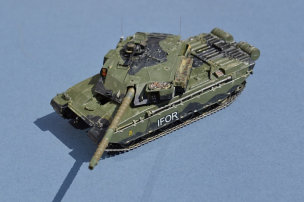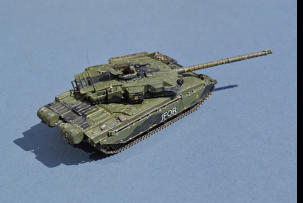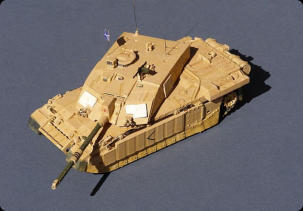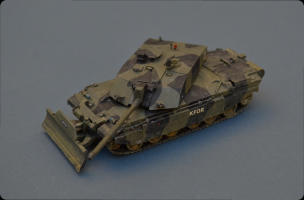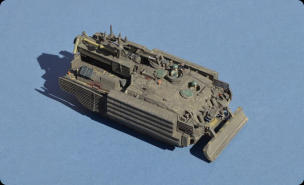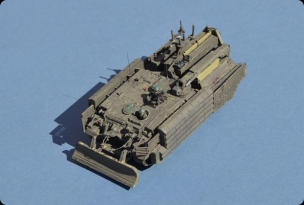
Gengriz The Dark Side

© 2024 Gengriz.co.uk
A number of Imperial War Museum pictures are also used on this site under the IWM Non-Commercial Licence
British Cold War Tanks
The FV4030/4 Challenger 1
FV 4034 Challenger 2
CRARRV
The Challenger 1 tank entered British Army service in 1983 and served until its replacement by the much improved Challenger 2 in 2001. Challenger 2 is the current in-service Main Battle Tank of the British Army.FV 4030 Challenger 1
The Challenger 1 was designed around the revolutionary “Chobham” ceramic armour as an improved variant of the FV 4201 Chieftain Tank that had served since the late 1960s. The updated vehicle was originally produced for the Iranian Army, but was not delivered due to the Iranian revolution. Challenger 1 shared many of the Chieftain's faults, including a less than effective gun aiming system and unreliable power plant. However, its very high protection levels and the lethality of its main armament remained powerful factors. With the Chieftain looking more and more outdated, the new design was quickly introduced to service with the British Army. This is the Revell 1/72 model, representing a Challenger 1 Tank of The Queen's Royal Hussars, operating as part of IFOR (the NATO-led Implementation Force) in Bosnia during 1996.FV 4034 Challenger 2
Fitted with second generation Chobham armour, the Challenger 2 is probably the best protected tank in NATO. Initially it suffered from the poor reputation of its predecessors, but an astonishing effort from Vickers successfully raised Challenger 2s performance so that it is now one of the most reliable AFVs in the world. The Challenger's performance in Iraq in 2003 was nothing less than a revelation. Its 120mm rifled gun proved lethal against all opposition and it took a massive roadside bomb before the first and only case of a Challenger's armour being defeated. One tank that shed a track spent several hours immobilised, under direct and close Iraqi RPG and anti tank fire, but without injury to any its crew. It was recovered, repaired and placed back in service within 24 hrs. During the assault on Basrah, 14 Challenger 2 tanks of C Squadron, Royal Scots Dragoon Guards, Scotland's only remaining Cavalry Regiment, were on their way to reinforce 3 Commando Brigade, Royal Marines on al-Faw peninsula, when they encountered a column of 14 Iraqi T-55 tanks. In what was the biggest and most decisive tank battle fought by the British since El Alamein, all 14 Iraqi tanks were destroyed with no damage to the Scots tanks. Both of these models are the Trumpeter 1/72 kit, in slightly different variants, with add-on armour packs and a dozer blade as appropriate to their tasking and environment. Top two: A Challenger 2 of the Royal Scots Dragoon Guards, operating in support of 3 Commando Brigade Royal Marines, during the assault on Basrah, Iraq in 2003. Bottom two: Challenger 2s of the Royal Scots Dragoon Guards also participated in the 2004 KFOR (NATO Kosovo Peacekeeping Force) operation in the former Yugoslav Republic of Kosovo.Challenger Armoured Repair & Recovery Vehicle
Based on an upgraded Challenger 1 chassis, the Challenger Armoured Repair and Recovery Vehicle (CRARRV) is one of the largest and most impressive armoured vehicles around. Normally manned by 3 Royal Electrical and Mechanical Engineers (REME) specialists, its cabin can carry 5 persons in NBC and armour protected safety. It can tow and recover all current British Army tracked vehicles and is very heavily armoured, allowing it to proceed into combat zones to undertake recover under fire. A 50 ton winch and lifting beam is supplemented by a 6.5 tonne Atlas crane capable of lifting a Challenger 2 power pack, it carries a variety of specialist tools including cutting and welding equipment. A large dozer blade enables it to dig itself into cover or remove obstacles. Also in service with The Royal Army of Oman, it is designed to operate alongside the Challenger tank, a total of 84 were built between 1988 and 1993. CRARRVs have seen active service in Bosnia, Kosovo, The Gulf and Afghanistan. Two ex-British Army vehicles were supplied to Ukraine in 2023 to support donated Challenger II tanks. Return to Main Battle Tank page Return to British Cold War page Return to Dark Side AFVs index page Return to Gengriz Modelling Index Page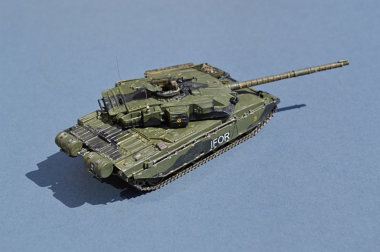
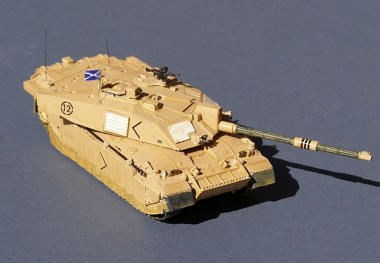
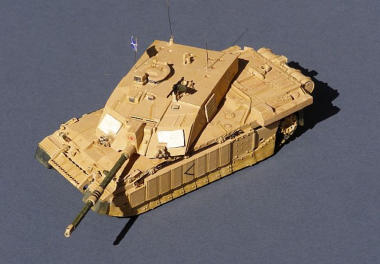
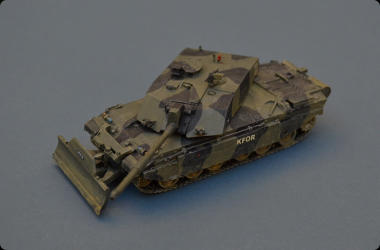
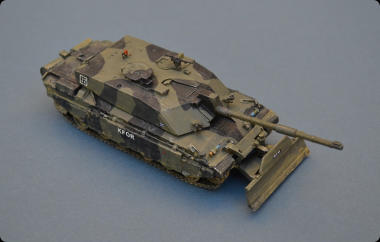
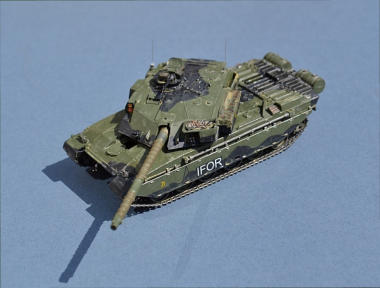
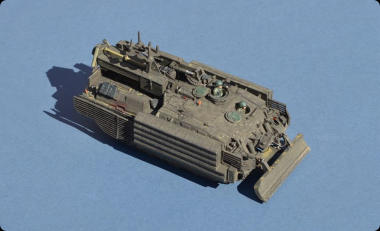
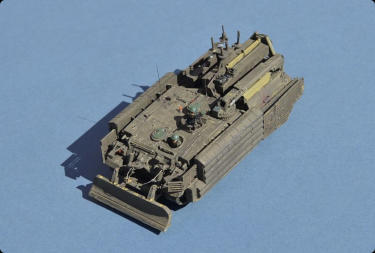

Gengriz The Dark Side

© 2023 Gengriz.co.uk
A number of Imperial War Museum pictures are also used
on this site under the IWM Non-Commercial Licence
British Cold War Tanks
The FV4030/4 Challenger 1
FV 4034 Challenger 2
CRARRV
The Challenger 1 tank entered British Army service in 1983 and served until its replacement by the much improved Challenger 2 in 2001. Challenger 2 is the current in-service Main Battle Tank of the British Army.FV 4030
Challenger 1
The Challenger 1 was designed around the revolutionary “Chobham” ceramic armour as an improved variant of the FV 4201 Chieftain Tank that had served since the late 1960s. The updated vehicle was originally produced for the Iranian Army, but was not delivered due to the Iranian revolution. Challenger 1 shared many of the Chieftain's faults, including a less than effective gun aiming system and unreliable power plant. However, its very high protection levels and the lethality of its main armament remained powerful factors. With the Chieftain looking more and more outdated, the new design was quickly introduced to service with the British Army. This is the Revell 1/72 model, representing a Challenger 1 Tank of The Queen's Royal Hussars, operating as part of IFOR (the NATO-led Implementation Force) in Bosnia during 1996.FV 4034 Challenger 2
Fitted with second generation Chobham armour, the Challenger 2 is probably the best protected tank in NATO. Initially it suffered from the poor reputation of its predecessors, but an astonishing effort from Vickers successfully raised Challenger 2s performance so that it is now one of the most reliable AFVs in the world. The Challenger's performance in Iraq in 2003 was nothing less than a revelation. Its 120mm rifled gun proved lethal against all opposition and it took a massive roadside bomb before the first and only case of a Challenger's armour being defeated. One tank that shed a track spent several hours immobilised, under direct and close Iraqi RPG and anti tank fire, but without injury to any its crew. It was recovered, repaired and placed back in service within 24 hrs. During the assault on Basrah, 14 Challenger 2 tanks of C Squadron, Royal Scots Dragoon Guards, Scotland's only remaining Cavalry Regiment, were on their way to reinforce 3 Commando Brigade, Royal Marines on al-Faw peninsula, when they encountered a column of 14 Iraqi T-55 tanks. In what was the biggest and most decisive tank battle fought by the British since El Alamein, all 14 Iraqi tanks were destroyed with no damage to the Scots tanks. Both of these models are the Trumpeter 1/72 kit, in slightly different variants, with add- on armour packs and a dozer blade as appropriate to their tasking and environment. Top two: A Challenger 2 of the Royal Scots Dragoon Guards, operating in support of 3 Commando Brigade Royal Marines, during the assault on Basrah, Iraq in 2003. Bottom two: Challenger 2s of the Royal Scots Dragoon Guards also participated in the 2004 KFOR (NATO Kosovo Peacekeeping Force) operation in the former Yugoslav Republic of Kosovo.Challenger Armoured Repair & Recovery Vehicle
Based on an upgraded Challenger 1 chassis, the Challenger Armoured Repair and Recovery Vehicle (CRARRV) is one of the largest and most impressive armoured vehicles around. Normally manned by 3 Royal Electrical and Mechanical Engineers (REME) specialists, its cabin can carry 5 persons in NBC and armour protected safety. It can tow and recover all current British Army tracked vehicles and is very heavily armoured, allowing it to proceed into combat zones to undertake recover under fire. A 50 ton winch and lifting beam is supplemented by a 6.5 tonne Atlas crane capable of lifting a Challenger 2 power pack, it carries a variety of specialist tools including cutting and welding equipment. A large dozer blade enables it to dig itself into cover or remove obstacles. Also in service with The Royal Army of Oman, it is designed to operate alongside the Challenger tank, a total of 84 were built between 1988 and 1993. CRARRVs have seen active service in Bosnia, Kosovo, The Gulf and Afghanistan. Two ex-British Army vehicles were supplied to Ukraine in 2023 to support donated Challenger II tanks. Return to Main Battle Tank page Return to British Cold War page Return to Dark Side AFVs index page Return to Gengriz Modelling Index Page